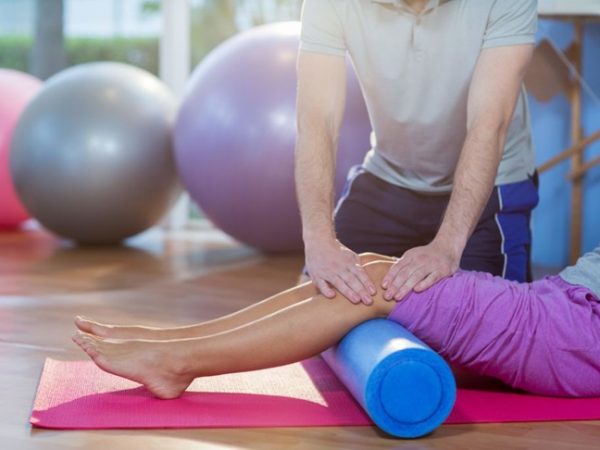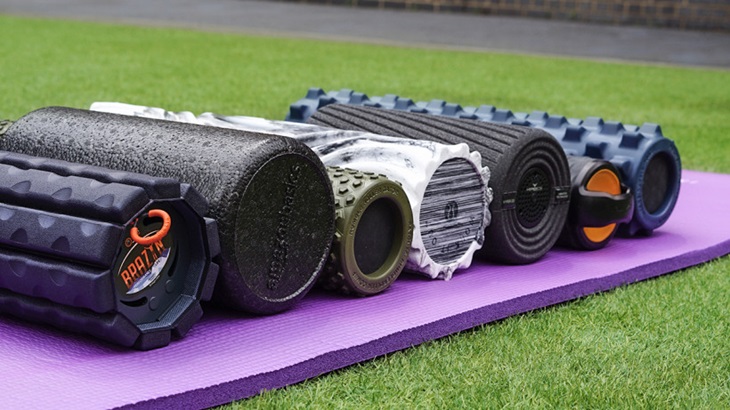19
Dec

You have already seen them in your gym and a lot of commercials. They either have that smooth and foamy appearance that reminds you of the great feel of a straightened and relaxed back, or look a bit like a medieval torture instrument, that brings goose bumps along your spine. In any case, foam rollers are the new, popular tool for massage and deep tissue release.

Simply said, these are lightweight foam cylinders that help you release muscle tension and prevent soreness after your workout routine. Coming in different shapes, sizes and surface textures, they will give you that deep relaxed feel after all the effort and strain put into your training.
If you decide to buy a foam roller to ease discomfort throughout your body, the first area in which you can use it is myofascial release therapy. Myofascia is the thin connective tissue under the skin that surrounds and holds the muscles in the body. Over time, after intense activities or inactivities, this tissue starts creating knots and adhesions that become trigger points causing pain. The foam rolling applies pressure to these points and with constant use, breaks them down thus bringing relief.
Foam rolling is also a massage technique that reduces the muscle soreness that comes as a result of intense workouts. A lot of athletes who used it for a longer period also reported improved joint motion and increased flexibility. Finally, as all massages do, it improves blood circulation and thus contributes to the overall health of the body.
Foam rollers are part of the equipment in all gyms and physical therapy centres. The athletes use them for individual training programmes and regimes, pilates, yoga, Feldenkreis exercises etc. Wherever there is an intense workout and sore muscles, the foam rollers can provide pre and post-treatment. They are an inevitable tool for a precise targeted, deep-tissue massage done at home or as part of rehabilitation treatments.
Lately, they are also becoming a part of our ergonomically equipped offices, as exercise tools that prevent and release sore backs and stiff necks. When daily exercises are selected to match the body’s needs, they help us keep the muscle balance and prevent all kinds of work-related injuries.

The four main qualities you have to take into consideration when buying a foam roller are density, surface texture, shape, and size.
The level of density goes from soft to medium-firm and firm. It is also colour-coded, so the soft rollers are usually white, while red and blue are medium-firm. The firmest rollers come in black, but some brands don’t always respect this standard. So, in the end, if you want to check the density, squeeze the roller and see for yourself.
Soft foam rollers can be used by anyone and are the first choice for beginners. They are gentle with even surfaces along the whole length of the roller and don’t induce too much discomfort. Keep in mind that exercising with a foam roller isn’t the most pleasant thing in the world, at least, until you get used to it. It is all about putting pressure on knots and muscle groups, so it can be pretty uncomfortable. So, take a soft foam roller and start the process.
If you haven’t experienced the top-level pressure, be sure that these black guys will show you the feeling. They are the next level of muscle tissue aligning and breaking knots and adhesions and it doesn’t happen in only one try. The firm foam rollers are for experienced athletes with super-tight muscles or for those who feel delayed onset muscle soreness (meaning that you still feel pain after two or three days since your last workout). These rolling blacks stimulate lymphatic drainage which cleans away the tissues and decreases the inflammation.

A lot of foam rollers have different types and depths of surface texture that provide different amounts of pressure. The ridges and knobs have similar effects to the hands of a masseur and give deeper and more targeted massage which flattens and eventually eliminates the knots in your myofascial. When you’ve felt the trigger point that indicates the knot, add some pressure, and it will loosen. But don’t keep it for too long, it has to be under 30 seconds.
There is a variety of shapes and sizes for foam rollers and we will describe some of them here according to their length, diameter and shape.
Their length is around 90 centimetres and they can work well, especially for your large muscles and back areas. This length is enough to support the spine if you want to release the sore spots between the shoulders and other parts along the vertebrae. If you need to massage your back, you can put the long rollers perpendicularly to your spine and start exercising. Your quads, hamstrings and other body parts will also be grateful for the stability offered by this length.
The rollers of 60 centimetres or less are used for smaller body areas like arms and calves, and the shortest ones (in different lengths from 10 cm to 30 cm) are excellent if you have to do your exercises in small workout spaces, They are also suitable if you need to travel somewhere and you